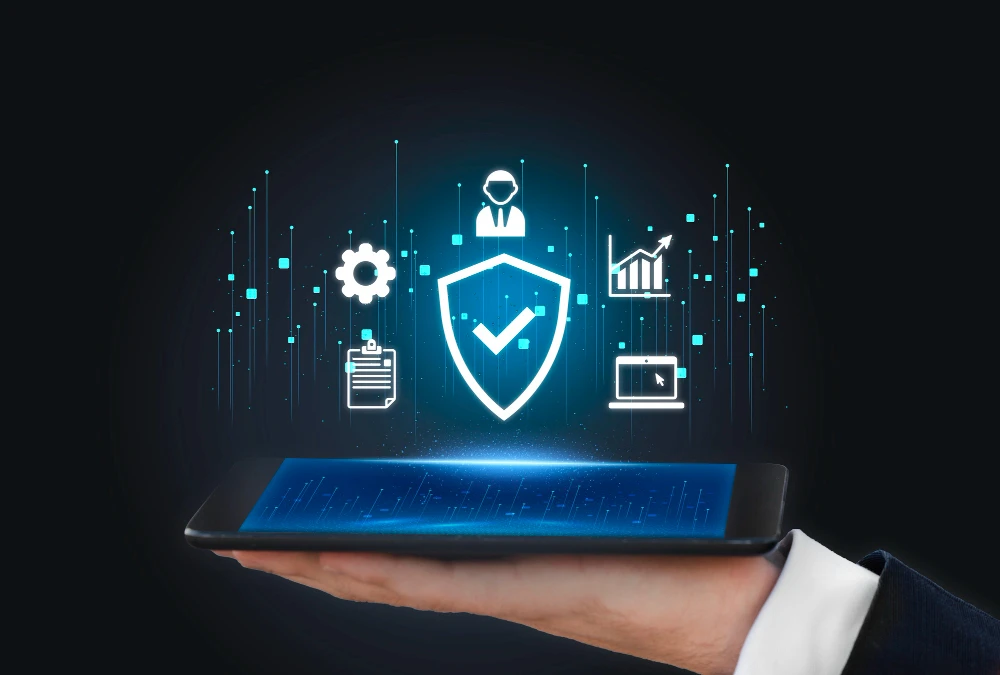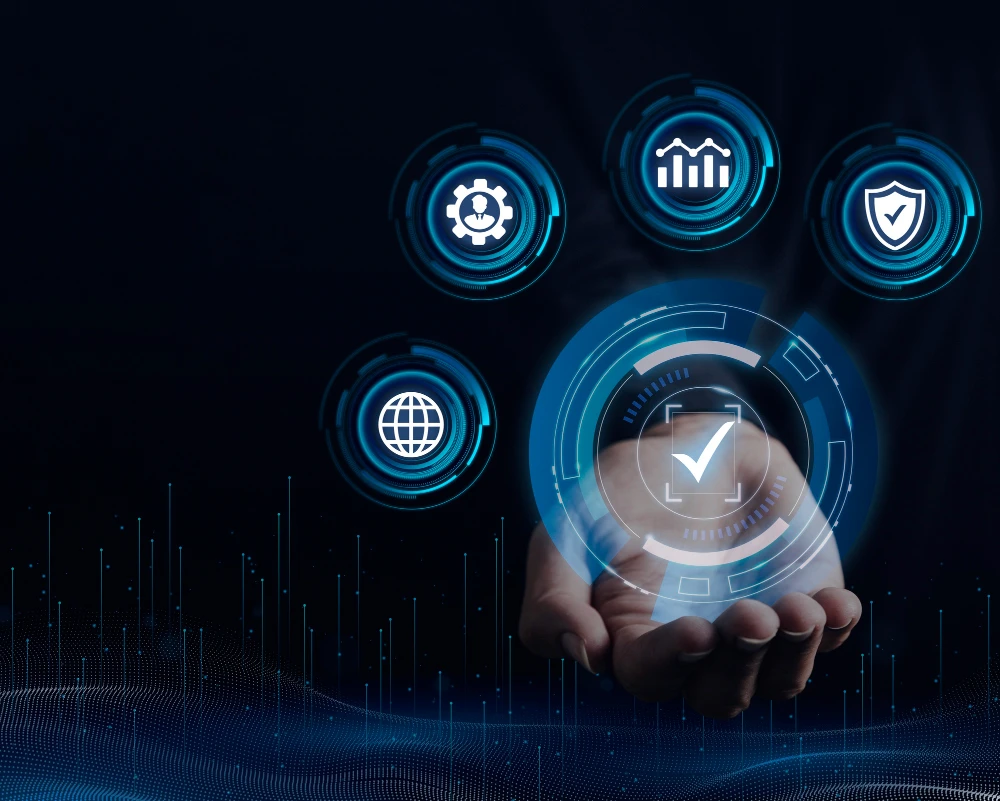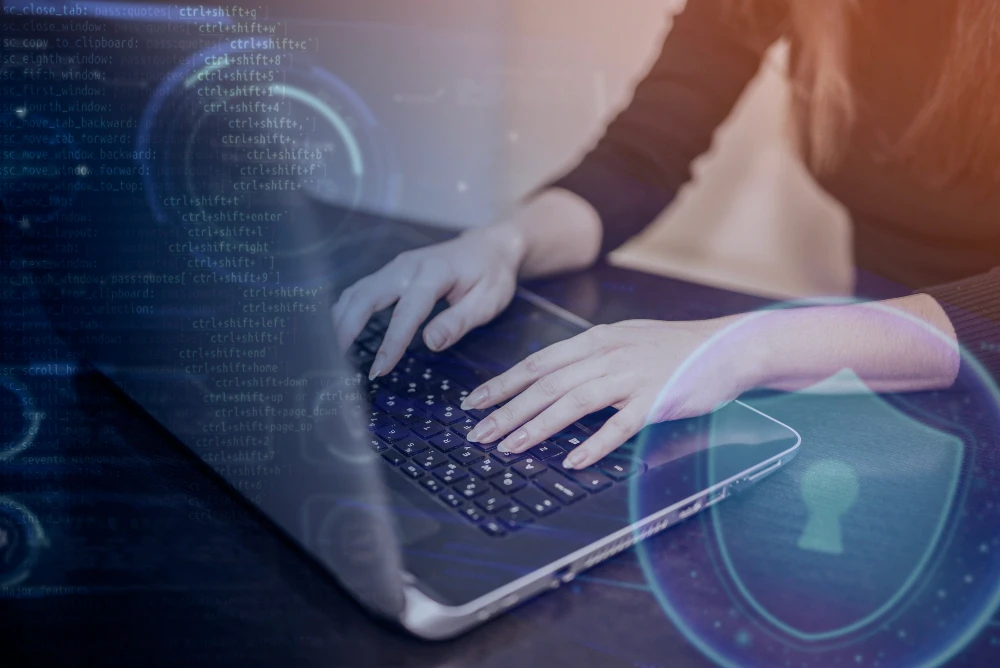Jun 12, 2025
Key Highlights
Understand the most common AI security risks affecting legal practice and how they compromise data security.
Protect sensitive data and maintain client confidentiality with best practices and integrated security solutions.
Identify applicable regulatory requirements and ensure AI use aligns with legal obligations in the United States.
Implement actionable measures like staff training, incident response protocols, and continuous monitoring to strengthen security posture.
Adopt effective risk management strategies to handle vulnerabilities in AI systems.
Keep pace with evolving threats, ensuring robust AI security standards for your law firm.
Artificial intelligence changes the way people work in law. It makes research faster and helps with document analysis. But using new AI technologies in legal work brings new risks. The biggest issues are data security and keeping client information safe. Because of this, legal professionals have to find a balance. They want to use AI for new ideas, but they also need to meet rules and act ethically.
Knowing about security standards helps with risk management. This lets law firms get through AI security challenges without losing their good name. This guide will show you how to use artificial intelligence in the best way. It helps you keep sensitive data and your clients' information safe.
Understanding AI in Legal Practice
AI systems change the way legal work is done in many ways. They can help to speed up daily tasks and also make it easier to guess what will happen in a case. The applications of AI use machine learning and deep learning that require large amounts of data. These AI models help legal teams by making document checks faster, doing better legal research, and helping to see what could happen in court cases.
When you add AI to legal work, it is not only about getting work done faster. It also brings new things to think about, like safety and right or wrong issues. It is important to know how these tools work. This helps you use AI systems in ways that keep everyone safe and help get good results in the legal field.
Related article: 7 Powerful ChatGPT Prompts for Lawyers & Legal Professionals
Common AI Applications for Legal Departments

AI technologies play a crucial role in the legal profession by simplifying complex tasks associated with contract lifecycle management (CLM). Data processing systems utilize machine learning to swiftly analyze extensive legal documents, allowing legal professionals to efficiently extract relevant information for their cases. This innovation significantly reduces the time spent on manual work, while also minimizing the risk of errors and enhancing precision in contract review and negotiation.
Another valuable application is the use of training data in predictive tools that assist with contract outcomes. These tools provide legal practitioners with actionable insights, enabling them to anticipate potential risks and benefits of various contract clauses, thereby facilitating informed decisions for their clients.
In addition to these applications, AI enhances contract lifecycle management by automating the drafting and review processes. It can identify inconsistencies and automate compliance checks, ensuring that contracts adhere to complex regulations. Furthermore, AI-driven analytics can track contract performance and flag potential issues before they escalate, helping legal professionals manage contracts proactively.
By integrating machine learning into their practices, legal professionals leverage advanced tools that provide them with a competitive advantage in the industry, particularly in the realm of contract lifecycle management, where efficiency and accuracy are paramount.
Related article: Top 8 Legal AI Tools in 2025: Elevate Your Legal Process
Advantages of Integrating AI into Legal Workflows

Adding AI processes into legal work helps save time as it sorts through large amounts of legal data quickly. AI looks for patterns across this data and gives actionable insights to help you make better choices and find easier solutions.
Using AI also makes data security a key part of your work. These AI tools help keep sensitive information safe. They are good at sorting large amounts of data, which improves how accurate your team can be. This means your choices get better, and cases are handled well. AI also cuts down on mistakes that can happen if people do all this work by hand.
Following best practices by using tools like predictive systems helps you connect with clients in a better way. This means you can offer services that fit what they need. AI processes do more than boost how much work gets done. They let legal teams keep up with new tech, making sure your firm is one that people look at for good, up-to-date services. This way, your business can stay ahead of the others.
The Importance of AI Security for Legal Professionals
In legal teams, it is very important to keep sensitive data safe. AI technologies help people work faster, but they also bring some risks that security professionals need to watch for. When you use strong risk management and follow security standards, the legal department will have less chance of facing threats.
Keeping data secure is key to protecting client information and stopping people who should not see it from getting in. Legal professionals need special ways that fit risk management. This makes sure the AI technologies they use line up with the rules and can handle new problems.
Client Confidentiality and Ethical Obligations
Making sure that AI systems protect client privacy is a duty that all legal experts must follow. Weaknesses in AI tools can put sensitive data at risk of privacy violations. Because of this, strong security measures are needed to keep information safe.
Tools that handle sensitive information must use things like encryption, anonymisation, and tough access controls. Without these steps, there is a danger that sensitive data could get out or someone from the outside could try to get in and cause trouble. This would get in the way of basic ethics.
Firms also need to look closely at AI processes before using them to spot and fix any issues. A strong security posture helps protect privacy and build trust between firms and their clients.
Related article: AI and Law: Comprehensive Guide to Stay Up to Date
Key AI Security Risks in Legal Practice

AI security risks make law firms and their computer systems more vulnerable to problems. There are more ways for bad people to try things like changing input or breaking the AI model when the system is running. These are some of the security challenges that come up.
If teams do not handle AI security risks in the right way, the flow of work and private information may not stay safe. It can also hurt how people follow ethical rules. Working on these problems will help lawyers build strong security measures for their special legal needs. Next, let’s look at the main security risks, including data breaches and AI model changes.
Data Breaches and Information Leakage
Data breaches are still a big worry when it comes to using AI in legal systems. Threat actors try to find weak spots in client databases. They try to get into sensitive information without permission.
One main risk is when data breaches happen while the data is being handled. These leaks can take place because the data security is not strong, or someone with bad intentions gets in the way. Having strict data security rules in place can lower the chances of these problems happening.
Incident response plans made for the legal field help deal with issues quickly. Firms that use AI-driven tools for threat detection can act fast against leaks and protect their operations. This helps keep sensitive information safe while work continues.
AI Model Vulnerabilities and Manipulation
Targeted attacks on an AI model can bring problems like data poisoning and false positives. In these attacks, people change the input data or put harmful items in the data. This hurts how the AI model works.
Without effective vulnerability management, an attacker could alter the behavior of the AI model or compromise data privacy. These things can happen without the company knowing. That is why firms have to keep the AI model updated all the time. They need to check and work on the model often to stop these problems.
Having good security solutions can help protect the AI model from exploitation. For example, using encrypted model storage is one step. This lets your legal team build a stronger security posture to fight off adversarial attacks and keep attackers out.
Related article: AI for Legal Documents: Your Essential Guide
Threats Unique to Legal Sector AI Tools

AI tools made for legal work have some special problems that normal AI apps do not face. The client details and case files that lawyers deal with are very private. So, law firms can be targets for clever attackers who want that data.
Supply chain problems and missed steps when setting up AI tools are big things to watch out for. You need to keep the process safe from the very start. This includes training the system and running it every day. Doing so helps with privacy worries and makes it harder for people to mess with what the AI can do by tricking it. Now, let’s talk more about two special dangers these tools can face.
Sensitive Document Exposure
Storing sensitive information and legal documents in AI systems can lead to data leaks if there is not enough security. If setups are not done right, privacy violations can happen, and this can hurt client trust.
Firms should use encryption and follow zero-trust rules when working with systems that handle private files. Using checks and split-up AI workflows together also helps cut down exposure risks by a lot.
It is good to put money and time into strong monitoring for these tools. This makes sure that any breaches linked to handling documents the wrong way stay very low, and helps legal experts keep their trustworthiness.
Adversarial Attacks Targeting Legal Databases
Adversarial manipulation is a rising problem for database work in legal AI systems. Attackers look for weak spots and get into legal platforms. They change input data to get around normal threat detection.
Building strong algorithms that can block adversarial examples and doing regular audits of the database make security better. Watching threat patterns with AI systems helps keep legal input data and datasets safe from being changed.
Early warning tools help to spot trouble fast, so teams can act right away when there is a problem. This helps attorneys keep their important decisions safe when they face these kinds of attacks.
Related article: Can AI Replace Lawyers? Exploring the Future of Legal AI
Safeguarding Client Data with AI

AI solutions that focus on responsibly protecting help companies reach strong client data protection standards. Cybersecurity systems that use machine learning put in place flexible ways to stop anyone who should not get in. These measures also help find threats before they become a problem.
When you add trusted tools, you make sure that people feel confident in automated security systems. Always checking risks helps the tools keep up with the role of being professional. It does this without giving up the need for private legal processes or the safety of key information.
Encryption and Secure Data Storage
Encryption is at the heart of secure client data storage. When legal teams use strong encryption, they can lower the risks of outsiders breaking in or changing data. This step helps protect important client details through all stages of storage.
Using best practices to organize data storage adds another layer of safety. It stops attacks that can happen if databases are set up wrong or if access is not monitored. With scalable frameworks that use many layers of encryption, legal teams can guard data well, even if there is a supply-chain issue.
Security solutions that make encryption easy help teams follow professional and ethical rules in their work. This way, everything stays clear and within the legal guidelines.
Safe AI-Driven Communication Channels
Legal information sharing needs strong AI communication channels. Using secure websites with good encryption helps keep your messages safe and private. But, there are risks when systems have weak spots in how people enter data.
Keeping an eye on user behavioral patterns helps make sure rules are followed and protects your information. Looking ahead and finding threats early can stop old types of attacks before they happen.
When you keep communication tools up to date, it lets legal workers have better workflows. This keeps things smooth, supports open teamwork, and makes sure tasks get done well, with clear and simple results.
Related article: Agentic AI in Legal: 5 Effective Ways Lawyers Use Agentic AI
Best Practices for Using AI Securely in Law
Using AI systems in legal is important. To keep things safe, follow best practices and have a strong risk management plan. Do regular risk assessments and use security standards made for this type of work. Get cybersecurity professionals to check your AI technologies often. They can help you spot potential vulnerabilities and make your security posture better. Make sure you have an incident response plan ready. This will help your team know what to do when security threats happen. It will also help lower the chance of data breaches or unauthorized access to sensitive information. Always be ready to handle new security challenges as they come.
Related article: Can Generative AI be trusted by Lawyers? Expert Guide
Vetting AI Vendors and Solutions

A careful look at AI vendors is needed to keep data security strong in legal practices. Use a risk assessment plan to look at possible partners. Check if they follow the right security standards and regulatory requirements, including SOC2 Compliance and ISO 27001 certifications, which demonstrate a commitment to security best practices.
Find out about their security posture by asking about past incident response plans and what cybersecurity measures they have now.
Also, look into how their AI tools manage sensitive information and keep it safe from data breaches. Working with cybersecurity professionals can help spot problems in the supply chain and give actionable insights to make AI setups safer.
Implementing Strong Access Controls
Setting up strong access controls is key when you want to keep sensitive information safe in AI systems. When the people who can see or use the system are limited to only those who are authorized, law firms can lower their risk of attacks. This will help you cut down on potential vulnerabilities and make your attack surface smaller.
Using machine learning helps track user behavior patterns in a better way. It can make the security posture of the organization stronger. Doing regular audits of these access rules and also making sure they follow important security standards will help meet regulatory requirements.
This also helps you keep up with changes in the world of cybersecurity and builds a culture where people are always looking out for risks and ready to respond. Risk management becomes a big part of how you use new technology inside your firm.
Training and Awareness for Legal Teams
Strong training programs help legal teams learn more about AI systems and AI technologies. This knowledge helps people see the risks, like data breaches and unauthorized access. When law firms teach their staff about these issues, it helps to make their security posture stronger.
If teams plan for incident response, they will be ready to deal with problems that can come from using AI technologies. Doing regular training can help everyone keep up with new security solutions. The staff get useful, actionable insights that help them spot user behavior patterns. With this, teams can take quick action to stop security challenges before they get too big.
Educating Staff on AI Risks
Keeping people up to date about the risks of AI is very important to make sure data security stays strong. When you build a culture where your staff is always aware of risks, they can spot potential vulnerabilities and know the security measures to use against them. Training your team regularly helps them better understand things like adversarial attacks, data poisoning, and what to do if someone tries unauthorized access.
This way, your staff can see security threats early and react well. When you stress the need to follow set security standards and rules, it helps your company have security teams who take action right away. All of this works together to build a strong security posture, which is key, especially for those working in the legal world.
Developing Incident Response Protocols
Having a strong incident response plan is very important for any legal firm that uses AI technologies. These plans need to have clear steps about what to do if there are data breaches or security threats.
This helps security teams act fast to lower the risk. Doing regular training and holding practice drills lets legal professionals get to know the plan. It also helps them be ready for any potential vulnerabilities.
Having a good way to talk during incidents lets people work together. It helps them deal with problems quickly and in the right way. This ensures the firm meets regulatory requirements while keeping sensitive information safe.
Related article: Generative AI for Lawyers: Capabilities & Limitations
Monitoring and Responding to AI Security Threats

Taking steps early to watch for AI security threats is a big part of keeping strong cybersecurity in law firms. Security teams can use ongoing checks to spot potential vulnerabilities in AI systems.
This way, they can build better protection and stop adversarial attacks or unauthorized access before they happen. A good incident response plan is also needed. This lets legal workers handle any AI-related events quickly and the right way.
When there are clear rules about reporting problems and when cybersecurity professionals work together, firms see a better security posture and manage risks with more success.
Continuous Security Assessments
Implementing ongoing security checks is key for keeping a strong security posture against changing AI security risks. When security teams check AI systems often, they can find potential vulnerabilities and keep up with new threats.
Using a risk management framework helps organizations make sure their AI technologies follow regulatory requirements and security standards. This way, the attack surface gets smaller and incident response plans get better.
Cybersecurity professionals also get actionable insights that help protect sensitive data at all times.
Reporting and Managing AI-Related Incidents
Setting up a clear process for reporting and handling AI-related problems helps law firms keep strong data security and protect sensitive information. When security teams spot potential vulnerabilities early, they can use quick solutions to fix them.
Regular training helps personnel know what to look for, so they can respond fast to incidents. Working with cybersecurity professionals also makes the defenses stronger and helps to stop threats in time.
By following these best practices, legal firms can boost their security posture and keep sensitive information safe from data breaches.
Related article: How to maintain ethically use AI in Legal Operations
Conclusion
Getting around the world of AI security means you need to really know about the risks and what safety steps to take. It's important to follow best practices, like checking AI vendors well and making sure your legal teams get ongoing training.
This can help your firm have a stronger security posture by keeping your sensitive information safe. It is also key to watch out for new changes in AI threats and to use strong incident response plans if something goes wrong.
If you put security first in your AI processes, it not only protects your legal work but also helps build trust with your clients and the people your firm works with.
Frequently Asked Questions
What are the most common AI security risks for law firms?
Common AI security risks for legal professionals are often data breaches, algorithmic bias, and phishing attacks. Additionally, poor vendor management can expose important client information.
Insufficient training for staff can result in improper use of AI tools, leading to compliance issues and potential lawsuits. Legal professionals must be aware of these security risks and how to manage them to ensure the safety of sensitive data.
How can legal professionals ensure AI tools protect client confidentiality?
Legal workers can keep client details safe when they use AI tools. To do this, they should check vendors carefully and make sure there are good rules for who can see the data. Using strong encryption is important.
Staff must also get regular training about privacy laws and the right way to use information. This helps make sure everyone's details stay private when AI is used.
Are there regulations governing AI use in the US legal sector?
Yes, there are rules about how people use AI in the legal field. Various legal associations have established guidelines on the use of technology and ethical practices. They emphasize the importance of maintaining client confidentiality and ensuring robust data security when utilizing AI tools in legal work.
What steps should a legal professional take after an AI-related security breach?
After an AI security breach, a legal professional should act fast to stop the problem. It needs to check how big the breach is and tell everyone affected. The firm must also follow any legal rules for these cases.
The legal professional should also look into what happened and update their security steps. This will help stop the same thing from happening again.
How often should AI security protocols be reviewed in legal practices?
Legal practices need to check their AI security rules at least once a year or even more often if new risks show up. Regular checks help these practices keep up with changing problems and make sure they follow industry rules. Doing this helps improve the way they handle security and keeps important client information safe.
About the Company
Volody AI CLM is an Agentic AI-powered Contract Lifecycle Management platform designed to eliminate manual contracting tasks, automate complex workflows, and deliver actionable insights. As a one-stop shop for all contract activities, it covers drafting, collaboration, negotiation, approvals, e-signature, compliance tracking, and renewals. Built with enterprise-grade security and no-code configuration, it meets the needs of the most complex global organizations. Volody AI CLM also includes AI-driven contract review and risk analysis, helping teams detect issues early and optimize terms. Trusted by Fortune 500 companies, high-growth startups, and government entities, it transforms contracts into strategic, data-driven business assets.








